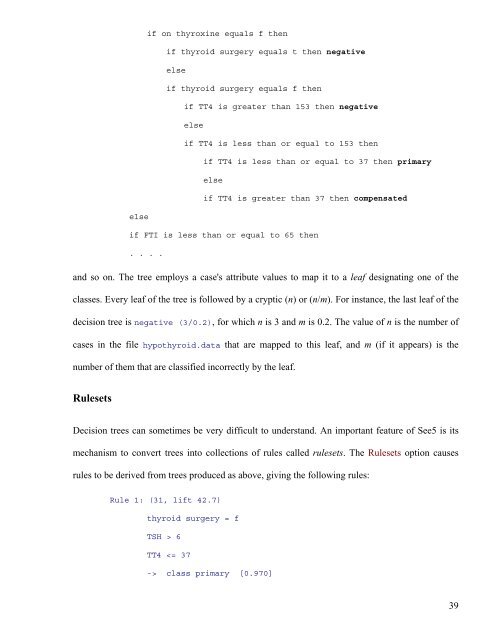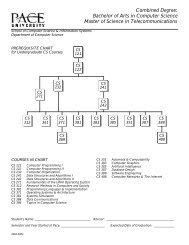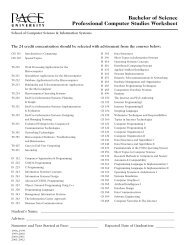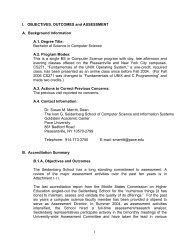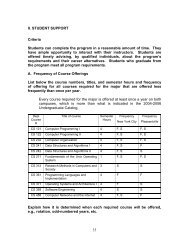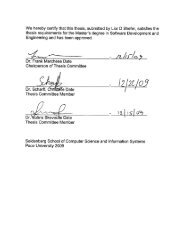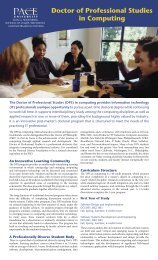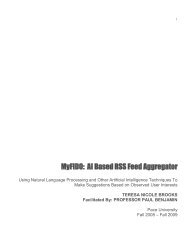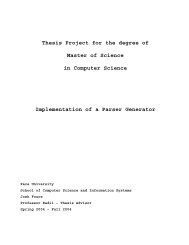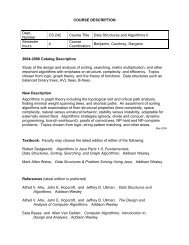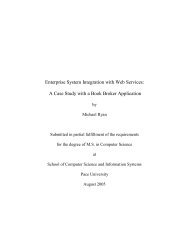Web Analytics Understanding user behavior and ... - pace university
Web Analytics Understanding user behavior and ... - pace university
Web Analytics Understanding user behavior and ... - pace university
Create successful ePaper yourself
Turn your PDF publications into a flip-book with our unique Google optimized e-Paper software.
else<br />
if on thyroxine equals f then<br />
if thyroid surgery equals t then negative<br />
else<br />
if thyroid surgery equals f then<br />
if TT4 is greater than 153 then negative<br />
else<br />
if TT4 is less than or equal to 153 then<br />
if TT4 is less than or equal to 37 then primary<br />
else<br />
if TT4 is greater than 37 then compensated<br />
if FTI is less than or equal to 65 then<br />
. . . .<br />
<strong>and</strong> so on. The tree employs a case's attribute values to map it to a leaf designating one of the<br />
classes. Every leaf of the tree is followed by a cryptic (n) or (n/m). For instance, the last leaf of the<br />
decision tree is negative (3/0.2), for which n is 3 <strong>and</strong> m is 0.2. The value of n is the number of<br />
cases in the file hypothyroid.data that are mapped to this leaf, <strong>and</strong> m (if it appears) is the<br />
number of them that are classified incorrectly by the leaf.<br />
Rulesets<br />
Decision trees can sometimes be very difficult to underst<strong>and</strong>. An important feature of See5 is its<br />
mechanism to convert trees into collections of rules called rulesets. The Rulesets option causes<br />
rules to be derived from trees produced as above, giving the following rules:<br />
Rule 1: (31, lift 42.7)<br />
thyroid surgery = f<br />
TSH > 6<br />
TT4 class primary [0.970]<br />
39


